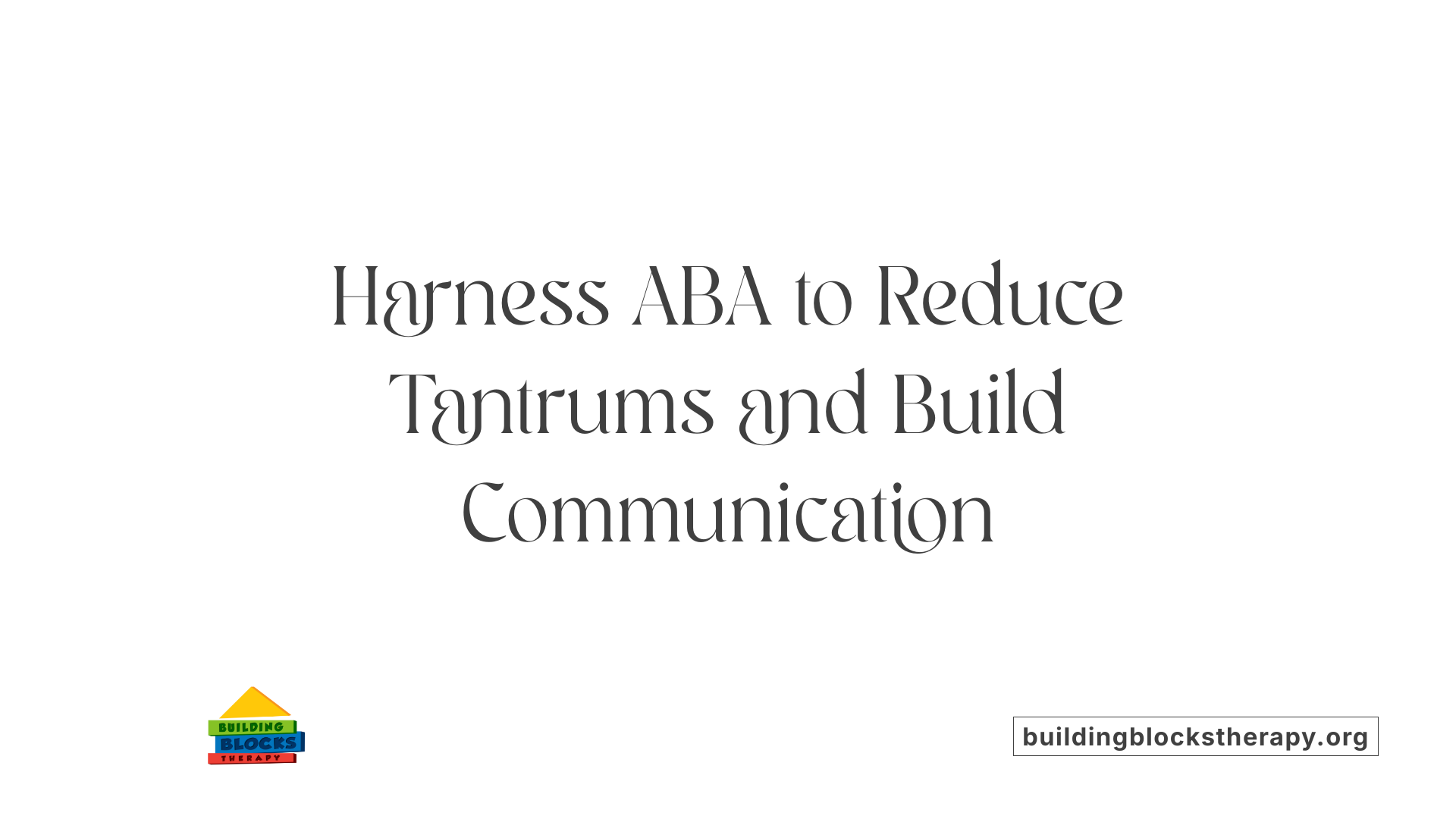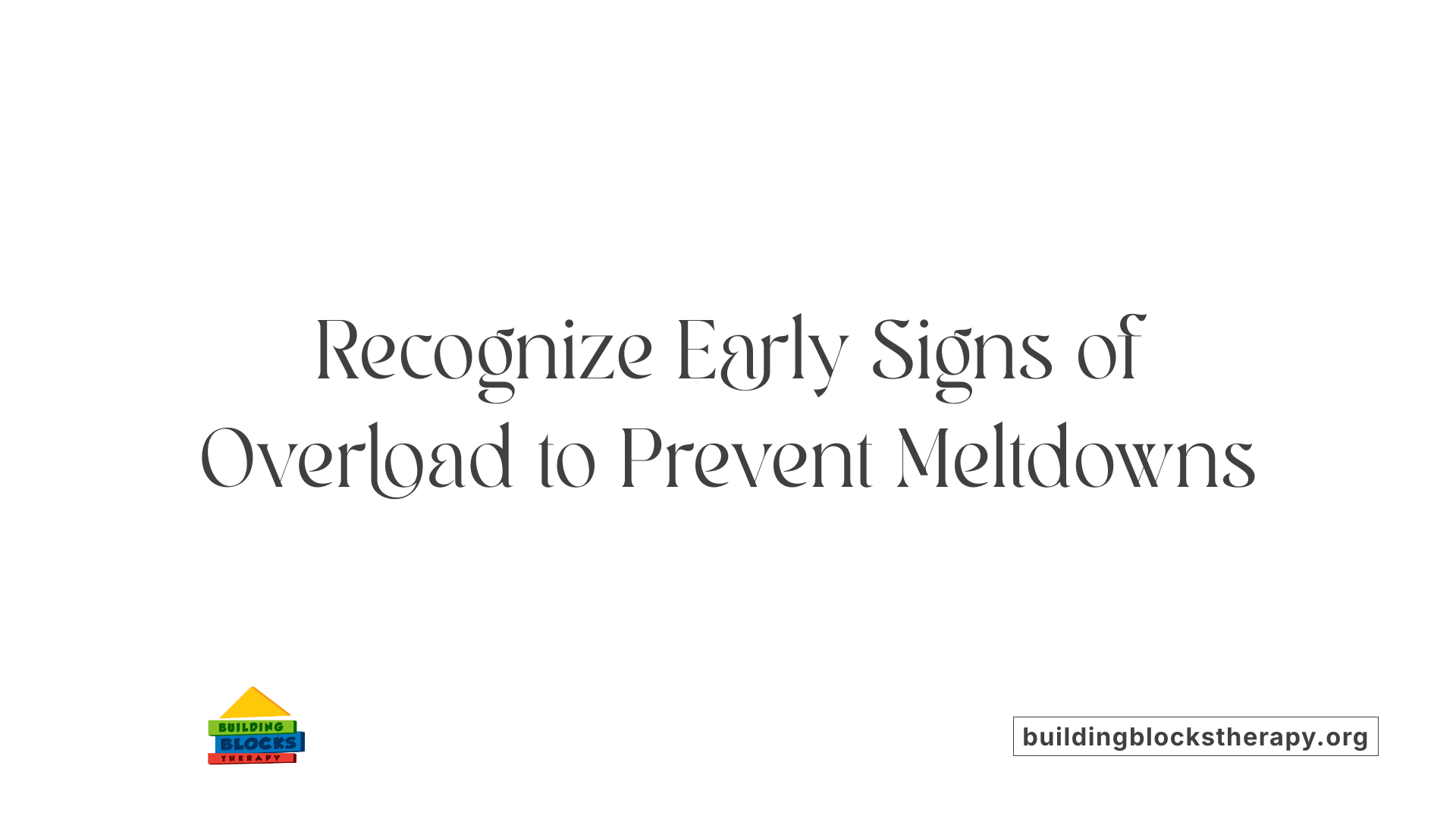Understanding and Addressing Meltdowns in Children with Autism
Meltdowns are intense emotional reactions commonly experienced by children with autism spectrum disorder (ASD). Unlike typical tantrums, meltdowns are involuntary responses to overwhelming sensory input or emotional stress, often lasting longer and being more difficult to control. Applied Behavior Analysis (ABA) offers evidence-based techniques to understand, prevent, and manage these challenging behaviors effectively, ensuring safety and promoting emotional regulation.
Comprehensive ABA Strategies for Managing Tantrums and Meltdowns

How does ABA therapy help children with autism manage meltdowns?
ABA therapy assists children in understanding and managing meltdowns by focusing on their underlying causes. By conducting functional analyses, therapists identify triggers such as sensory overload, communication difficulties, or environmental changes.
Interventions include teaching children functional communication skills like sign language or picture exchange, which allow them to express needs effectively instead of resorting to outbursts. Creating predictable routines, visual schedules, and modifying environments help foster a sense of security and reduce anxiety.
Additionally, ABA incorporates calming techniques, sensory regulation tools, and personalized strategies to help children self-regulate and handle sensory input better. Consistent support across different settings and collaboration with caregivers ensures that approaches are tailored and effective in minimizing meltdowns.
Overall, ABA helps children develop emotional resilience and strategies to manage overwhelming situations proactively.
The Importance of a Safe and Calm Environment During Meltdowns

How does the environment influence meltdowns and their management?
The environment has a profound impact on whether a child with autism experiences a meltdown or manages to stay calm. Overly bright lights, loud noises, or chaotic surroundings can overload the child's sensory system, leading to frustration and emotional outbursts. In contrast, a sensory-friendly and predictable environment can help prevent these episodes from occurring.
Creating a calm space that minimizes unnecessary sensory input allows children to self-regulate more easily. Recognizing behavioral cues, such as covering ears, pacing, or tense body language, helps caregivers step in early to redirect or calm the child. By keeping the environment stable and free of overwhelming stimuli, caregivers can significantly reduce both the frequency and intensity of meltdowns.
Establishing consistent routines and clear expectations also offers a sense of security. When children know what to expect, they are less likely to become anxious or overwhelmed, making crises less likely to escalate. Addressing sensory sensitivities through environmental adjustments is essential for promoting emotional well-being and effective management during challenging moments.
What practical steps can caregivers take to create a sensory-friendly space?
Creating a sensory-friendly environment involves thoughtful modifications that provide comfort and predictability for children with autism. Practical steps include selecting calming sensory tools like soft lighting, noise-canceling headphones, and tactile toys that help soothe overaroused senses.
Designing a dedicated calming corner or quiet space can serve as a refuge during stressful situations. This area should feature comfortable seating, dim lighting, and minimal visual clutter. Including visual schedules and timers in this space helps children anticipate upcoming activities, reducing uncertainty and anxiety.
Maintaining environment consistency is crucial. Limiting exposure to unpredictable stimuli and establishing routines creates a stable setting where children feel secure. These adaptations provide children with a safe place to self-regulate, recover from stress, and prevent meltdowns or sensory overload.
How can caregivers recognize signs of sensory overload or agitation before a meltdown occurs?
Early identification of sensory overload is vital for intervention and prevention. Caregivers should look for non-verbal cues and behavioral signs indicating that a child is becoming overwhelmed.
Common signals include covering ears, looking away from stimuli, increased pacing, repetitive movements, tense posture, or tense facial expressions. Some children may whine, withdraw, or display physical tension that suggests rising distress.
Training caregivers to observe these early signs allows for prompt action, such as providing a calming sensory item, guiding the child to a quieter space, or offering choices to regain control. Routine incorporation of sensory breaks and consistent responses to cues further help in preventing escalation.
By understanding and recognizing these signs early, caregivers can intervene effectively, helping the child manage their sensory experiences and maintain emotional balance. Creating such a supportive environment and developing awareness of behavioral cues are essential components in addressing meltdowns proactively.
Post-Meltdown Support and Building Emotional Resilience
Why is post-meltdown support important?
Post-meltdown support is essential for helping children recover emotionally and feel safe again. After a meltdown, children need reassurance that they are okay and that they did not cause harm to themselves or others. Gentle, calm communication reassures children that they are understood and that adults are there to support them. Allowing time for rest and hydration helps their body and mind recover from the overwhelming experience.
It’s also helpful to reflect on what triggered the meltdown. This process, done without blame or criticism, encourages trust and teaches children that challenging emotions can be managed. When caregivers reinforce positive behaviors and coping strategies during the recovery, children learn adaptive responses. Over time, this approach builds resilience and improves their ability to handle future emotional episodes more effectively.
How can reinforcement and positive feedback help during recovery?
Reinforcement and positive feedback are vital tools in helping children recover from difficult moments. Praising children for staying calm, trying to use coping techniques, or simply attempting to communicate provides encouragement. This kind of positive reinforcement increases the likelihood that these desirable behaviors will recur.
Using natural reinforcers—such as offering a preferred activity or a favorite calming item—adds to the effectiveness because children associate these rewards with their efforts to manage emotions. Consistent praise and reinforcement boost children’s confidence, making them more resilient emotionally. As they experience success in calming down, children are less likely to have future meltdowns and more likely to develop a sense of mastery over their emotional responses.
What strategies can caregivers implement to teach self-regulation skills after a meltdown?
After a meltdown, teaching self-regulation skills helps children better manage their emotions in the future. Caregivers can guide children through calming activities like deep breathing, counting, or using visual timers to help them understand when they feel ready to re-engage. These activities provide tangible ways for children to recognize and control their emotional states.
Introducing coping strategies such as sensory breaks—using calming sensory toys or quiet space—relaxation exercises, or offering choices among calming activities equips children with tools to handle distress proactively. Visual aids, social stories, or step-by-step guides further reinforce these skills.
Consistent practice, modeling calm behavior, and providing positive feedback promote independence in using these strategies. Over time, children learn to identify their emotional signs and employ calming methods independently. This process fosters emotional resilience, empowering children to regain control more quickly during future episodes and helping them develop strong self-regulation skills for lifelong emotional health.
Empowering Children Through Behavior Support
Addressing meltdowns effectively with ABA requires a comprehensive understanding of their triggers, functions, and appropriate intervention strategies. By creating safe, sensory-friendly environments, teaching communication and self-regulation skills, and maintaining consistent routines, parents and caregivers can significantly reduce the frequency and severity of meltdowns. Systematic approach using functional analyses and personalized behavioral plans supports children in developing resilience, emotional regulation, and adaptability. Collaboration with trained professionals ensures that interventions are tailored to each child's unique needs, fostering long-term growth and well-being. Ultimately, ABA provides a framework for empowering children with autism to navigate their emotions safely and confidently.
References
- ABA Tantrums - Step It Up ABA
- How To Deal With Meltdowns: ABA Strategies For Success
- ABA for Tantrums and Meltdowns - Fast Track ABA Center
- Effective ABA Strategies for Dealing with Tantrums
- Effective ABA Strategies for Dealing with Tantrums
- Effective ABA Strategies for Dealing with Tantrums
- Challenging Behaviors and Autism
- Understanding Challenging Behaviors in Autism Spectrum
- Can ABA Therapy Help Manage Challenging Behaviors in Autism?






